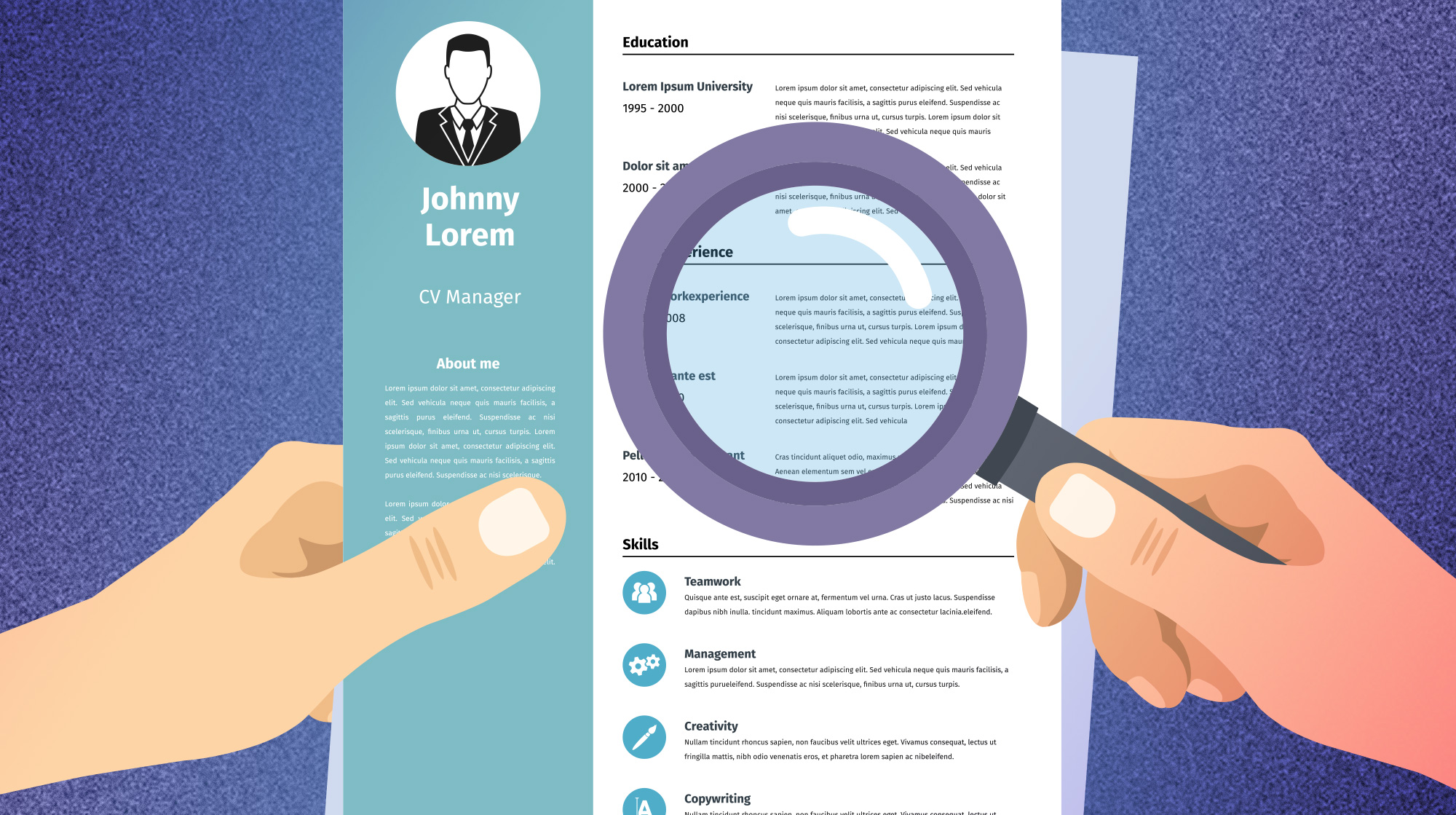Career resources content posted on NEJM CareerCenter is produced by freelance health care writers as an advertising service of NEJM Group, a division of the Massachusetts Medical Society and should not be construed as coming from, or representing the views of, the New England Journal of Medicine, NEJM Group, or the Massachusetts Medical Society.
Simple format, brevity, and absolute accuracy — and avoiding including extraneous details — are musts.
Physician residents and fellows who start writing their curriculum vitae (CV) usually approach the task expecting that it will be a straightforward matter of letting the world know where they’ve been and what they’ve done, in a document that is about three pages in length. In theory, that’s about right. In practice, however, many young physicians, especially those about to launch their first job search, quickly find themselves sweating the details. They wrestle with how much detail to include and how to structure their CV as the selling tool they intend it to be: a document that sets them apart from the crowd.
Fretting a bit about getting it right is not a bad thing, say recruiters and physicians who are on the receiving end and who review scores of CVs each year. Too often, young physicians don’t take the time to ensure that their CV is not only polished and error-free, but also an accurate reflection of important accomplishments that prospective employers care about.
John D. “Jack” Buckley, MD, vice chair for education in the department of medicine at Indiana University School of Medicine, frequently encounters CVs that leave out the kinds of details that might be differentiators: committee work, quality-improvement initiative involvement, medical student teaching or mentoring, or even assistance on a hospital IT project.
“Ideally, everything that is on your work calendar should be on your CV, and there should be a brief description and timeline of those roles or assignments,” said Dr. Buckley. In his experience, residents usually include their research work but sometimes leave out these kinds of quasi-extracurricular activities, thus missing an opportunity to demonstrate their willingness to go above and beyond what’s required of them.
Sapna Kuehl, MD, director of the internal medicine residency at Saint Agnes Healthcare in Baltimore, Maryland, also urges physicians to briefly describe their roles in committee, task force, or initiative work, and associated accomplishments. “People who are hiring physicians out of training are looking for evidence of dedication and persistence,” she said.
Format: keep it simple
Choosing a CV format is perhaps the easiest aspect of preparing a professional-looking CV. Examples abound online, and most training programs provide a recommended template for physicians seeking structure guidance. The basic content and suggested order of information appearance, for trainees seeking an initial practice opportunity, are as follows:
- Name and contact information
- Education, undergraduate through internships, residencies, and fellowships — including specific clinical roles and any leadership roles
- Licensure (status of applications planned or underway, if any)
- Board certification or status
- Professional experience (medicine-related only), including procedure and patient volumes, if/as applicable to the specialty, and administrative roles or duties
- Activities and committee memberships, including roles and brief descriptions of associated accomplishments
- Honors, awards, and professional affiliations
- Publications and presentations
All dated entries should be chronologically arranged on the page from present to past, in a month/year format. Physicians should be prepared to explain any gap of more than three months in a conversation or a cover letter, all sources agreed, and should never attempt to “fudge” or cover up a gap. “A gap can be a red flag to a recruiter, even if the reason is completely understandable,” said Laura Schofield, a recruiter with Boston-based Atrius Health, which employs approximately 950 physicians.
Christopher Shireman, who is chief executive officer of Western Neurosurgery Ltd., in Tucson, Arizona, and has vetted scores of physician candidates over his 20 years in health care leadership, expects physicians to explain any sizable timeline gaps in an accompanying cover letter, not in the body of the CV. “I had one candidate who had a one-year gap before medical school, who spent that year working in an emergency room. In another case, the candidate took off a year during training to take care of his dying mother,” Mr. Shireman said. “Most of the time, it’s just a matter of letting people know why there’s a gap.”
Regarding date and timeline entries, physicians should doublecheck all dates before finalizing the document and ensure that the CV is up to date, according to Jeffery Johns, MD, medical director of the Vanderbilt Stallworth Rehabilitation Hospital in Nashville, Tennessee. “It’s important that your CV is up to date as of the day you send it. If you have an entry that reads ‘2013–present,’ for example, ensure that’s correct,” said Dr. Johns. Failing to address such an important detail reflects poorly on the physician. “When I review CVs, I am looking for meticulous attention to detail.”
The CV should be rendered in a simple sans serif font in an easily readable font size — at least 11 or 12 points — and physicians should stick to a single font and size, and a very simple presentation format. “Remember that this is not an art contest,” Dr. Buckley said.
Brenda Reed, who is director of physician and medical staff recruitment at Atrius Health, considers a “busy” CV — one with several fonts or font sizes, or documents that contain graphics — not only annoying but also cause for mild suspicion. It can give the impression that the physician is trying too hard. “I have seen a beautiful CV hide a candidate who had serious performance issues or other problems, so I am a bit wary when I see a fancy CV,” she said.
In that same vein, Dr. Johns recommends that physicians who are preparing hard copies of their CVs to hand out at conferences or job fairs use a decent-quality paper stock — something slightly heavier than 20 lb. bond copier paper — but nothing dense, elaborate, or textured.
Keep recipient in mind
Rita Essaian, DM, MHA, executive administrator, human resources, at the Southern California Permanente Medical Group (SCPMG), which employs more than 9,000 physicians, stresses the importance of ensuring that the CV is error-free and professional in appearance. “The CV should be crisp, clean, and clearly written — no grammar or spelling errors — but also succinct,” Ms. Essaian said. SCPMG hired between 500 and 900 physicians annually in the past three years, and its recruiters receive more than 4,000 CVs in a given year, she explained. A recent cardiology position posting, for example, attracted 100 CVs. Given such volume, a physician whose CV is illegible, error-ridden, or difficult to follow might not make the first cut.
“Physicians should always have their CVs reviewed and proofread before sending them,” Ms. Essaian said. She added that potential candidates reaching out about a particular posted position should also ensure that the CV and cover letter clearly indicate relevance to the position of interest. The recruiters who do the initial screening, she said, will first match CVs to posted opportunities, and also screen on the basis of criteria the department chief provides before forwarding CVs to reviewing physicians.
Dr. Buckley agreed. “Residents and fellows should always have someone they trust review their CV draft,” he said. Several sources recommended that trainees whose first language is not English should seek professional help crafting and polishing the document if such services are not readily available through their program.
Physicians should also pay attention to seemingly minor formatting details that, if not handled properly, could frustrate potential readers who review scores of CVs as part of their job. Page numbers and an identifying footer including the physician’s name should appear on all pages. Further, ensure that the document’s file name isn’t cryptic, urges Ms. Reed. “One of my pet peeves is when candidates send a perfectly lovely CV, but then name the file ‘myCV.’ Always think about how something will be received on the other end,” she said, because attachments can and do get separated from the email message. She and other sources gave their votes to file names that start with the physician’s last name, followed by first name.
Finally, it’s advisable to prepare the CV in PDF format. That’s not a guarantee that the CV won’t be altered by a recipient — unfortunately, this does happen, recruiters said. Using a PDF is a deterrent, at least, because someone who decides to alter the document for whatever reason would have to first go through the trouble of converting it to another file format.
What to include, or possibly exclude
Regarding information that should not be included in the physician CV, sources interviewed for this article had mixed opinions in some cases. Most sources advised against residents including a career statement or job objective at the top, below contact details. That information is usually more appropriate for a cover letter or accompanying email note, unless its inclusion in the CV is requested.
There might be exceptions, however, depending on the employer. The Permanente medical groups’ recruiters and physician reviewers appreciate seeing a brief opening statement in a CV, especially if the physician has been in practice for several years. “In those cases, we really like to see a half-page career summary on the first page,” Ms. Essaian said. Another reasonable exception, several sources acknowledged, might be for internal medicine physicians who know that they only want a hospitalist position, not an outpatient practice job.
Regarding whether cover letters or explanatory notes should be supplied with CVs, the general consensus was that doing so is usually helpful and is definitely in the category of “can’t hurt.” At the very least, the accompanying document provides an opportunity for the physician to state why she or he is interested in either the organization or a posted position.
Dr. Kuehl, who favors a brief personal statement or cover letter, advises that the document should be employer focused. “It shouldn’t be too ‘I’ focused,” she said. “It’s an opportunity to talk about what you would bring to the organization that might distinguish you from other candidates — such as work in population management, IT expertise, patient counseling skills, or practice improvement experience,” she said.
Ms. Essaian noted that her organization also likes to see evidence in the cover letter that the candidate has gone to the effort to learn something about Kaiser Permanente health plan and its medical groups, which are independent entities that care for health plan members.
Sources offered mixed opinions on whether to include test scores. The general consensus was that unless the scores are very high, such as 220 or higher on the USMLE, it’s best not to include them.
Some recruiters and physicians favored a final section that lists personal interests and hobbies; others considered such detail extraneous. Ms. Essaian, for instance, said that her organization prefers not to see any personal details. Those who voted for including personal interests stressed the importance of employing brevity — two lines at most — and, of course, using good judgment in choosing what to reveal.
“I appreciate knowing a little bit about physician candidates’ interests — if they like hiking or snorkeling or skiing, for example, because that often helps with icebreakers and gives me a sense of who they are,” said Ms. Reed.
In the hobbies category, short-and-sweet is a must, according to Janet Jokela, MD, MPH, acting regional dean at the University of Illinois College of Medicine at Urbana. “I counsel residents that they don’t need to include their interests. But if they do, it should be a simple, short list, separated by commas, with no explanatory detail,” she said. “A resident who once asked me to review his CV draft had included three sentences on his basement home-brewing operation — not advisable.”
Mr. Shireman, who has reviewed numerous physician specialists’ CVs, appreciates knowing about candidates’ personal interests for the same reason Ms. Reed cites. “Especially in an intense field like neurosurgery, I want to see that information — just a line or two — because it shows me they’re human and that they have a life outside of medicine,” he said.
The issue of whether to include a photo elicited varying responses, but most sources advised against including one — and definitely not embedded in the CV document — unless a photo is requested. “There is always the possibility of unconscious bias, so I think it’s best to avoid including one,” Dr. Buckley said. Ms. Schofield noted that some training programs encourage their international medical graduates to send photos and that some hospitals seeking candidates may require them, though she herself opposes the idea.
It should go without saying that physicians should never inflate, embellish, or mischaracterize their achievements in an attempt to give a better impression. Besides being dishonest, such tactics are likely to backfire at some point, with potentially career-damaging repercussions. “Honesty and complete accuracy are the most important aspects of a CV. Physicians should never inflate anything,” Dr. Jokela said.
Sources agreed that physicians should keep to the standard order of information appearance while attempting to position potentially distinguishing details on the first page, if possible. “Residents and fellows who have received awards or special recognition should consider moving up that information so that it appears on the first page, if it’s not too awkward to do so,” said Dr. Jokela. At the very least, she added, important awards shouldn’t be buried at the bottom of the document.
There appears to be general agreement that the following information generally should not be included on the physician CV, under most circumstances:
Birthdates, Social Security numbers, and any other official identification number. These should be excluded for both security and bias-avoidance reasons.
Marital status. This detail falls under the category of extraneous information, all sources agreed. Besides, if a candidate proceeds to a site interview or even a formal pre-interview call, that detail will likely emerge in the context of a conversation, even though recruiters and individuals involved in hiring are prohibited by law from asking for such information.
References. Including references before they’ve been requested can give a recipient the wrong impression. And besides, Mr. Shireman points out, references usually won’t be checked until a candidate has completed a site interview and the organization is considering setting a second site interview or drafting an offer. “Listing references before they’re asked for can make it look like you’re trying too hard,” he said.
Extensive publication details. Ideally, the publication citations should include only the basic details — the article author(s), title, and journal name and publication date.
Conference attendance. Several sources mentioned that they have occasionally received residents’ CVs that list conferences attended. This isn’t an important detail, except in cases when the resident gave a presentation or talk at the conference. That information would go under the category of invited speeches/presentations, below publications.
CV length and ‘version control’
The ideal length for a physician CV varies depending on the individual and the type of position being sought. In most cases, residents’ CVs can and should be rendered in a few pages (three or fewer) unless the trainee happens to have an unusually extensive research or publishing history.
Most sources thought that a single CV version should suffice in most cases, but several noted that there might be situations that warrant creating a short and long version. Physicians seeking a research position, for instance, might create a short version including the basics and a longer version detailing their research interests and accomplishments, and then offer recipients the opportunity to receive the longer one. Likewise, physicians seeking an administrative position or one in which special skills in health care IT are a plus, for example, might craft an additional document or addendum that describes their related experience.
“In most cases, a longer-version CV is really more appropriate for senior faculty members than for young physicians,” Dr. Jokela said.






